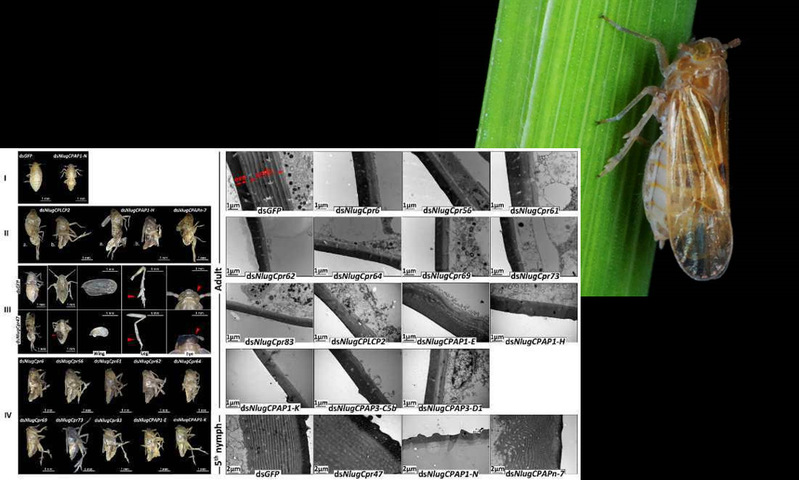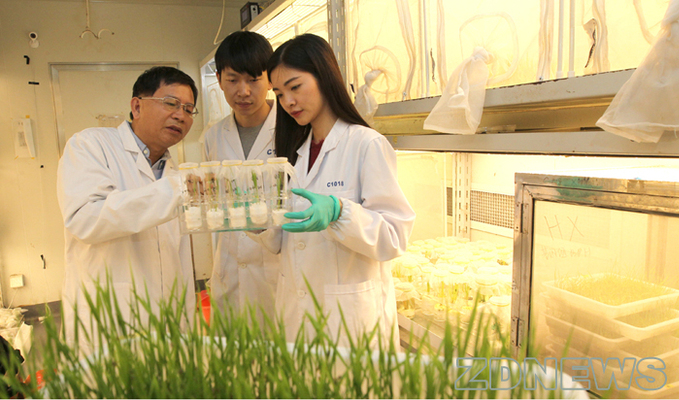Ph.D. candidate reveals cuticular proteins in brown planthopper
May 01, 2018|hufei |

Upright figure Source:http://www.knowledgebank.irri.org
The research team led by Prof. ZHANG Chuanxi published an article entitled “A comprehensive omics analysis and functional survey of cuticular proteins in the brown planthopper”, which reveals the full complement of CPs and their functions in the brown planthopper (BPH), in the April 30 issue of PNAS. Ph.D students PAN Penglu and YE Yuxuan from the Institute of Insect Science are lead co-authors and Prof. ZHANG Chuanxi is the corresponding author.

Cuticle, composed primarily of chitin and cuticular proteins (CPs), is a multifunctional structure of arthropods. CPs usually account for >1% of the total insect proteins. Why does an insect encode so many different CP genes in the genome?
In this study, researchers use comprehensive large-scale technologies to study the full complement of CPs (i.e., the CP-ome) of the brown planthopper (BPH), Nilaparvata lugens, a major rice plant pest. They discovere eight CP families (CPR, CPF, TWDL, CPLCP, CPG, CPAP1, CPAP3, and CPAPn) including 140 proteins in BPH, in which CPAPn is a CP family. The CPG family that is considered to be restricted to the Lepidoptera has also been identified in BPH. As reported here, CPLCP family members are characterized by three conserved sequence motifs. In addition, they identify a testis protein family with a peritrophin A domain. They verify the real existence of 106 proteins among the 140 CPs. RNA interference (RNAi) experiments are conducted against 135 CP genes in early- and late-instar nymphs and newly emerged female adults, demonstrating that 32 CPs are essential for BPH normal development or egg production. Combined RNAi experiments suggest redundant and complementary functions of the large number of CPs. Transcriptomic data reveal that the CP genes are expressed in a tissue-specific manner, and there are four clusters of developmental expression patterns.
This comprehensive CP-ome study unifying genomic, transcriptomic, and proteomic aspects in N. lugens, together with analyses of gene function and expression profiles, contributes substantially to the insect cuticle research field. These findings may furthermore stimulate the design and development of insecticides specifically targeting cuticle proteins.







